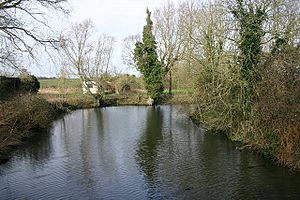Westhorpe Hall facts for kids
Westhorpe Hall was a large, important house in the village of Westhorpe, in Suffolk, England. It was once a grand manor house, a bit like a small palace, where famous people lived.
Contents
A Royal Home in Suffolk
Westhorpe Hall was the home of Charles Brandon, 1st Duke of Suffolk. He was a close friend of King Henry VIII. Charles Brandon married Princess Mary, who was King Henry VIII's younger sister. She had been Queen of France for a short time before marrying Charles.
Family Life at the Hall
Charles and Mary raised their children at Westhorpe Hall. Their children included Frances, who later became the mother of Lady Jane Grey. Lady Jane Grey was Queen of England for just nine days! Another daughter was Eleanor, and they also had a son named Henry Brandon, 1st Earl of Lincoln. Princess Mary Tudor, a real princess, passed away at Westhorpe Hall. Her body was kept there for three weeks before her burial.
The Hall's Demolition
Sadly, Westhorpe Hall was torn down in the late 1760s. A historian named Thomas Martin of Palgrave visited the site while it was being destroyed. He was very upset by how carelessly the workers were pulling it down.
What Thomas Martin Saw
Thomas Martin wrote about his visit. He saw beautiful parts of the building being smashed. These included fancy bricks and decorations made of hard-baked clay, which were still in perfect condition. He also saw a huge statue of Hercules that was broken into pieces. Even the colorful stained-glass windows were being destroyed. Martin noted that the wood in the building was still strong and sound. He felt it was a great shame that such an old and important building was not saved.
What Remains Today
Today, only a small part of the original Westhorpe Hall still stands. This section was once part of the household offices. It is now a retirement home, facing the village green.
Changes Over Time
This remaining building has parts from the late 1500s and early 1600s, made with timber frames and plaster. The main part, made of red brick, was built in the early 1700s. It was changed again in the late 1700s after the main manor house was demolished. All the parts that are left have been updated in the 1900s.


